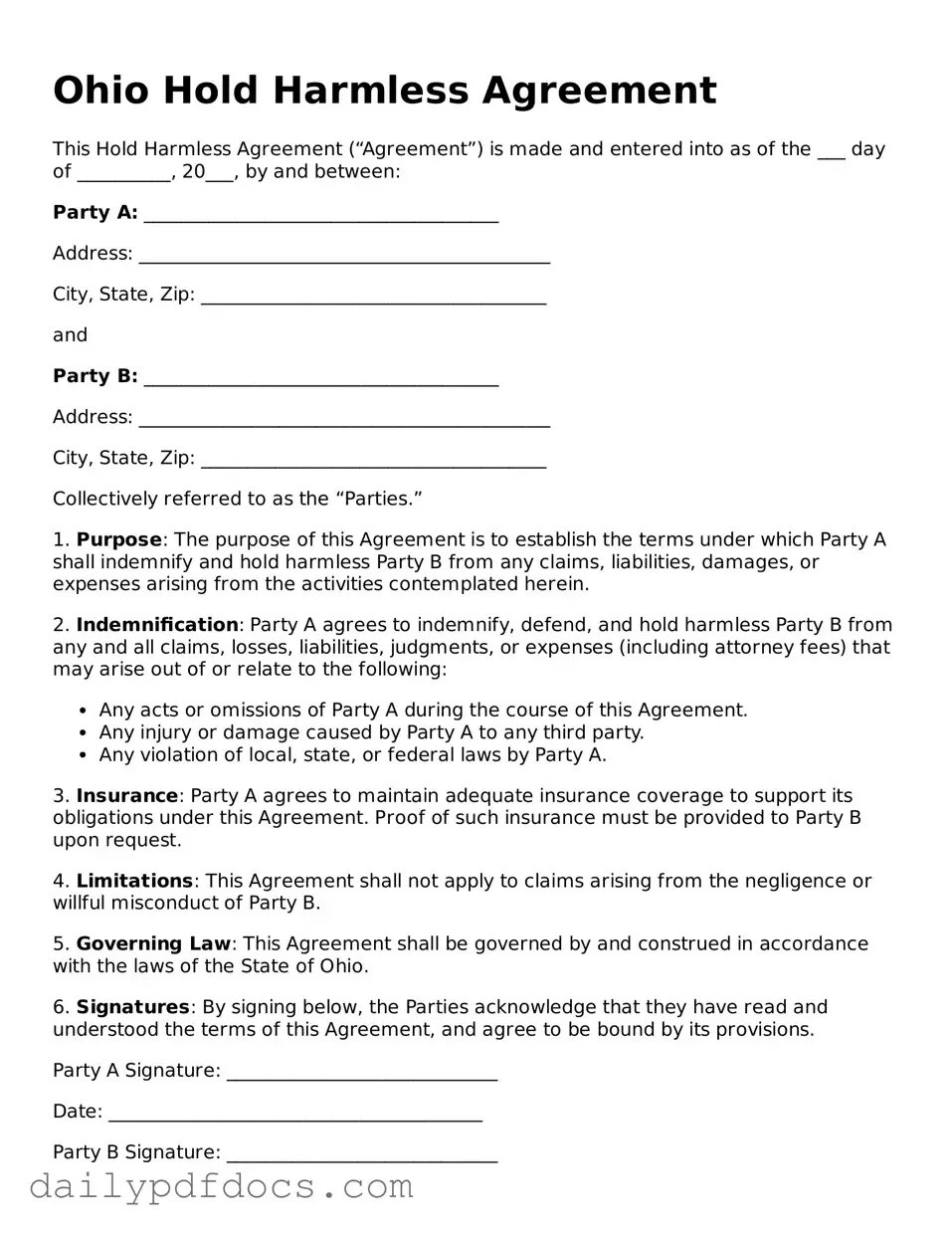Ohio Hold Harmless Agreement
This Hold Harmless Agreement (“Agreement”) is made and entered into as of the ___ day of __________, 20___, by and between:
Party A: ______________________________________
Address: ____________________________________________
City, State, Zip: _____________________________________
and
Party B: ______________________________________
Address: ____________________________________________
City, State, Zip: _____________________________________
Collectively referred to as the “Parties.”
1. Purpose: The purpose of this Agreement is to establish the terms under which Party A shall indemnify and hold harmless Party B from any claims, liabilities, damages, or expenses arising from the activities contemplated herein.
2. Indemnification: Party A agrees to indemnify, defend, and hold harmless Party B from any and all claims, losses, liabilities, judgments, or expenses (including attorney fees) that may arise out of or relate to the following:
- Any acts or omissions of Party A during the course of this Agreement.
- Any injury or damage caused by Party A to any third party.
- Any violation of local, state, or federal laws by Party A.
3. Insurance: Party A agrees to maintain adequate insurance coverage to support its obligations under this Agreement. Proof of such insurance must be provided to Party B upon request.
4. Limitations: This Agreement shall not apply to claims arising from the negligence or willful misconduct of Party B.
5. Governing Law: This Agreement shall be governed by and construed in accordance with the laws of the State of Ohio.
6. Signatures: By signing below, the Parties acknowledge that they have read and understood the terms of this Agreement, and agree to be bound by its provisions.
Party A Signature: _____________________________
Date: ________________________________________
Party B Signature: _____________________________
Date: ________________________________________
